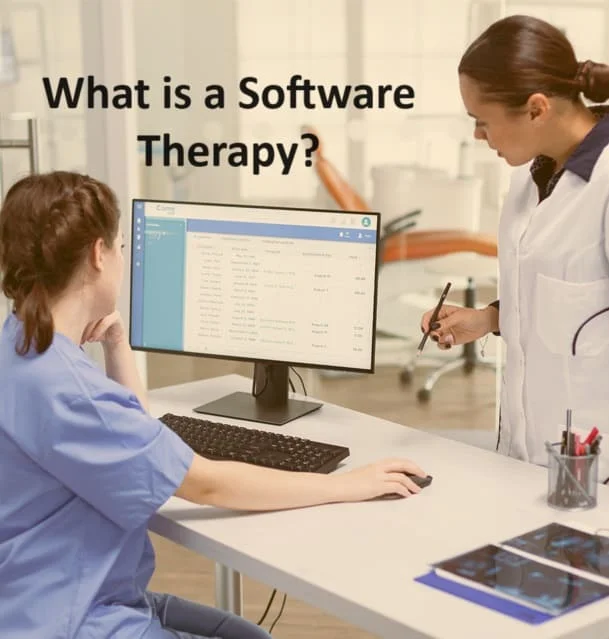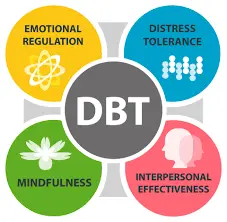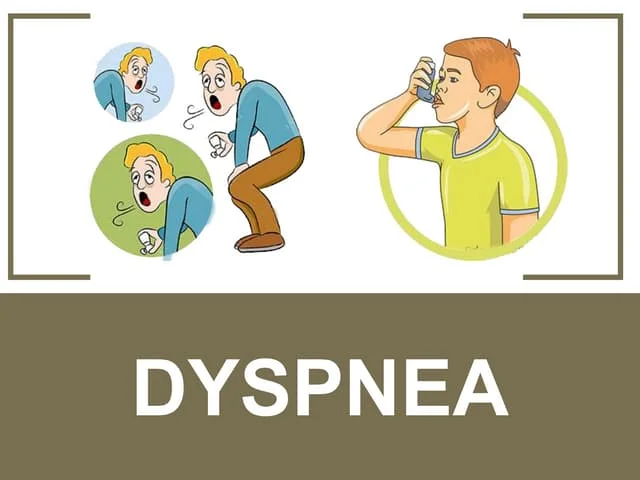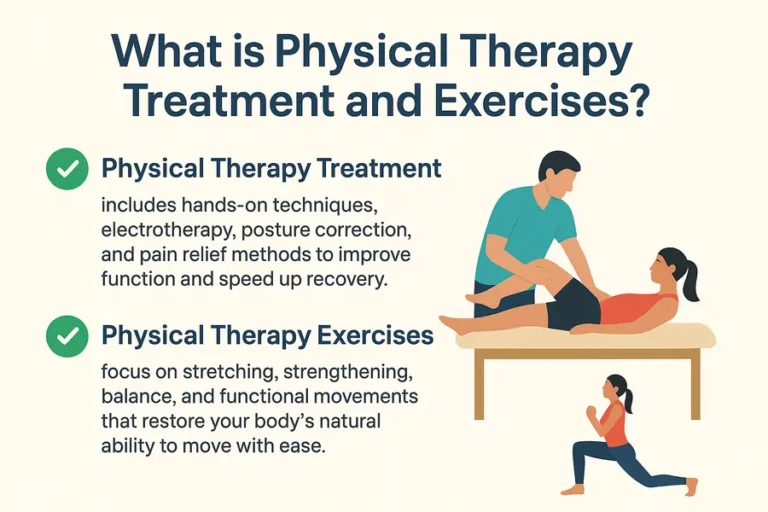Software Therapy
What is a Software Therapy?
Software therapy, sometimes referred to as digital therapy, e-therapy, or virtual therapy, is a type of mental health service delivery in which patients get therapeutic interventions via digital platforms and technologies.
Numerous methods and approaches may be used, including virtual reality treatment, online counseling and therapy platforms, mindfulness and meditation applications, cognitive behavioral therapy (CBT) software, and more.
Because it is more accessible, affordable, convenient, and private than traditional treatment, software therapy is growing in popularity.
It is useful in the treatment of mental health issues, managing chronic pain, treating addiction and substance abuse, and providing support to people who are ill with chronic illnesses, among many other areas of healthcare.
To make sure that people receive the support and direction they require to enhance their mental health and well-being, it is crucial to carefully assess the particular kind of software therapy being used and to get advice from a mental health expert.
Types of Software Therapy
A variety of software treatment approaches are frequently employed to provide people with mental health services.
Here are a few common types are:
- Software for cognitive behavioral therapy (CBT): CBT software includes interactive exercises and tools to assist people in managing their symptoms of anxiety and depression, enhance their problem-solving abilities, and recognize and confront negative thought patterns.
- Applications for mindfulness and meditation: These applications offer guided breathing techniques and meditations to help people relax, lower stress levels, sharpen their attention, and feel better all around.
- Cognitive Behavioral Therapy (CBT) software: Interactive activities and tools included in CBT software assist people in recognizing and challenging negative thought patterns, controlling anxiety and depressive symptoms, and enhancing their problem-solving abilities.
- Mindfulness and meditation apps: These apps provide guided meditation and relaxation exercises to help individuals reduce stress, improve focus and concentration, and enhance overall well-being.
- Virtual reality treatment: This kind of software therapy replicates real-world events using virtual reality technology to assist people in facing and overcoming phobias or anxiety-provoking circumstances.
- Online platforms for counseling and therapy: These offer people the chance to make secure phone calls, video conferences, or messages with certified mental health experts for counseling and therapy services.
- Mobile mental health apps: These apps offer a variety of mental health services, such as goal-setting, stress management, mood monitoring, and self-help tools.
- Software for biofeedback: This kind of software therapy tracks physiological reactions including skin temperature, muscle tension, and heart rate using sensors. It gives people immediate feedback to help them learn how to control these reactions and better handle stress and anxiety.
- Game-based therapy: Through the use of video games, game-based therapy offers people an enjoyable and interactive approach to acquire and hone coping mechanisms, social skills, and problem-solving techniques.
In general, every kind of software therapy has a distinct methodology and set of characteristics, and the efficacy of each may vary depending on the particular requirements and preferences of the individual.
It is important to seek guidance from a mental health professional to determine which type of software therapy may be most suitable for a particular individual.
Mechanisms of Software Therapy
Software therapy helps people by using technology to provide mental health services. The specifics of software therapy’s operation can change according to the kind being utilized, but the following broad guidelines can be applied to a wide range of software therapy models:
Assessment: People are usually evaluated to ascertain their mental health needs and pinpoint any underlying disorders prior to starting software therapy. Completing online surveys or taking part in a virtual assessment session with a mental health professional may be required for this exam.
Treatment planning: A plan outlining the aims and objectives of the software therapy program is created based on the assessment’s results. The course of treatment may be customized to meet the unique requirements and preferences of the patient.
Therapy delivery: A range of digital platforms, including websites, mobile applications, and virtual reality systems, are used to deliver software therapy. Included in the therapy could be virtual reality simulations, online counselling and therapy sessions, interactive exercises, and mindfulness and meditation sessions.
Feedback and tracking: Real-time data on an individual’s progress and results are provided to them through software therapy’s feedback and tracking features. This can involve monitoring your mood, symptoms, or advancement toward your treatment objectives.
Support and follow-up: To make sure that patients are getting the most out of their therapy, many software therapy programs incorporate support and follow-up. This can entail having access to peer support groups, mental health specialists, or other tools and services to assist people in managing their mental health.
Advantages of Software Therapy
A compelling alternative for those in need of mental health services is software therapy, which has a number of benefits over traditional therapy. Here are the following advantages of software therapy:
- Accessibility: Because software therapy may be accessed from any location with an internet connection or mobile device, it is more accessible than traditional therapy. This facilitates access to mental health care for people who might be less mobile or who reside in remote places.
- Affordability: Compared to traditional therapy, which can be expensive and may not be covered by insurance, software therapy is typically less expensive. For those on a tight budget, several software therapy programs provide pay-as-you-go or subscription-based pricing choices.
- Convenience: Softwaretherapy reduces the need to visit to a physical office because it can be accessed from anywhere at any time. People who live far from their therapist or have hectic schedules would particularly benefit from this.
- Privacy: Because software therapy can be done from the convenience and seclusion of one’s own home, it affords patients more privacy than traditional therapy. This is particularly crucial for people who might feel awkward bringing up delicate subjects in public.
- Customization: By selecting the kind of therapy that best fits their requirements and preferences, people using software therapy can make their therapy experience uniquely tailored to them. This can involve various techniques, exercises, and methods.
- Data tracking: A few software therapy applications include data-tracking tools that let users keep tabs on their development and analyze long-term results related to their mental health. People who do this may find it easier to maintain their motivation and interest in their therapy.
- Even though software therapy offers a lot of benefits, it’s vital to remember that not everyone will benefit from it. To overcome their mental health obstacles, some people might need the assistance and direction of a qualified mental health expert.
To ascertain if software therapy is the best option for a certain person, it is crucial to consult with a mental health specialist.
Applications of Software Therapy
There are several uses for software treatment in the medical field, especially in mental health. The following are a few of the most popular uses for software therapy:
Therapy for mental health issues: Software therapy is an effective treatment for a range of mental health issues, such as anxiety, depression, obsessive-compulsive disorder (OCD), PTSD, and substance abuse disorders.
Chronic pain treatment: In situations when conventional pain management techniques have proven unsuccessful or have unfavorable side effects, software therapy may be utilized as a non-pharmacological method of treating chronic pain.
Substance abuse and addiction: Software therapy can be incorporated into a thorough treatment plan to give patients access to resources and assistance outside of conventional treatment facilities.
Support for people with chronic illnesses: Software therapy can give people with chronic illnesses access to information and mental health support to help them manage the psychological and emotional difficulties brought on by their condition.
Prevention and early intervention: Software therapy can be employed as a preventative measure against the emergence of mental health disorders or as an early intervention strategy against their exacerbation.
Employee wellness initiatives: Software therapy can help employees’ mental health and wellness, lessen stress and burnout, and increase job satisfaction and productivity.
All things considered, software therapy has the potential to enhance mental health services accessibility, boost motivation and engagement, and give people the instruments and resources they require to take care of their mental health and welfare. It is crucial to remember that software therapy should only be utilized in conjunction with a thorough treatment plan that has the supervision and assistance of a qualified mental health practitioner.
Risks and Limitations of Software Therapy
Software treatment is not without risks and restrictions, despite its numerous potential benefits. When thinking about software therapy, take into account the following potential risks and restrictions:
Minimal in-person communication: The fact that software therapy does not provide the same degree of one-on-one connection as traditional therapy is one of its primary drawbacks. Some people might find it challenging to engage with a digital program, while others might prefer the face-to-face interaction of in-person treatment.
Technical problems: Software therapy’s reliance on technology for treatment delivery raises some possible concerns. Technical problems, such as a bad internet connection, broken equipment, or software bugs, can interfere with therapy sessions and aggravate patients.
Accessibility: Although software therapy can help certain people have better access to mental health care, not everyone may be able to utilize it. Programs for software therapy may be difficult to use for people with poor digital literacy or no access to dependable technology.
Restricted scope: Software therapy packages are usually created to address particular symptoms or conditions related to mental health. For those who need a more customized approach to treatment or have complicated mental health problems, they might not be appropriate.
Privacy issues: Using software carries an additional danger of privacy issues. Digital platforms may be used for the storage and transmission of personal health information, making it susceptible to data breaches and cyberattacks.
Absence of regulation: The digital mental health sector is currently largely unregulated, which implies that not all software therapy applications follow set safety and quality criteria or are supported by evidence.
Software therapy should be carefully considered as a treatment option, taking these dangers and limits into account. It is advised to consult a mental health expert for advice on whether software therapy is the best option for your unique needs and situation. Choosing trustworthy software therapy solutions that value user privacy and have been proven to be successful through extensive testing is also crucial.
Summary
A possible game-changer in mental health treatment, software therapy holds the promise of improving outcomes for patients with mental health disorders and expanding access to evidence-based care. Software therapy has the benefits of accessibility, customization, and cost, making it a beneficial alternative for many people, despite certain risks and limits, such as the lack of face-to-face connection and the need for cautious program selection that is based on evidence.
It is critical that patients and medical practitioners be up to date on the most recent findings and recommended procedures in the rapidly developing field of software treatment. By doing this, we can make sure that software therapy is applied responsibly and effectively to enhance everyone’s mental health results.







